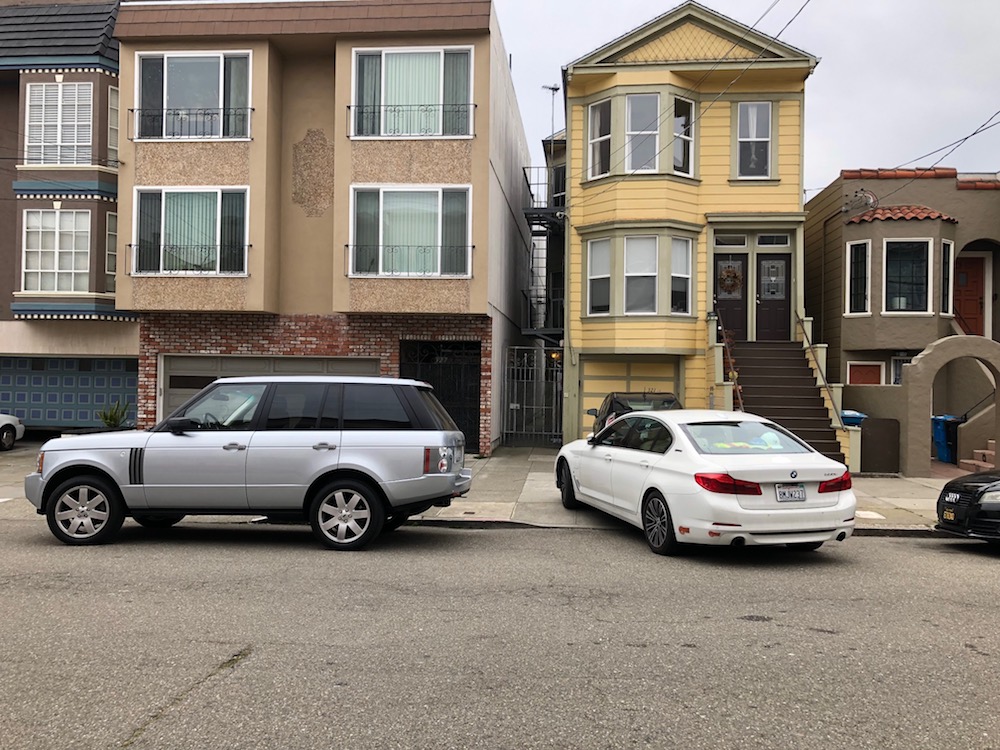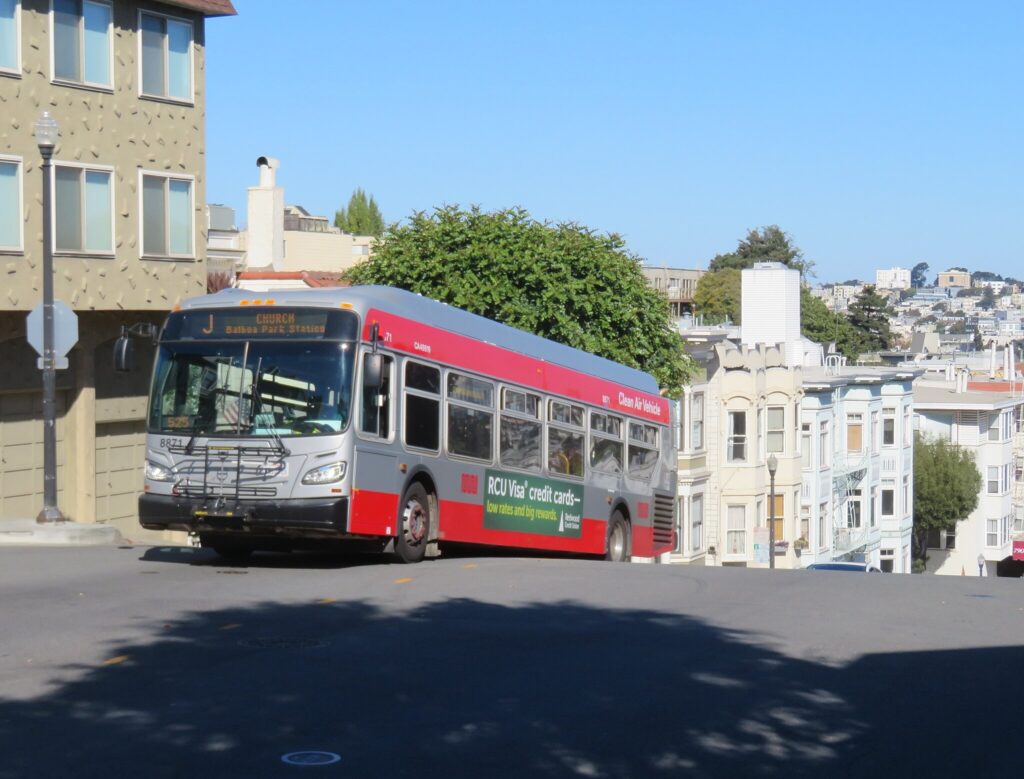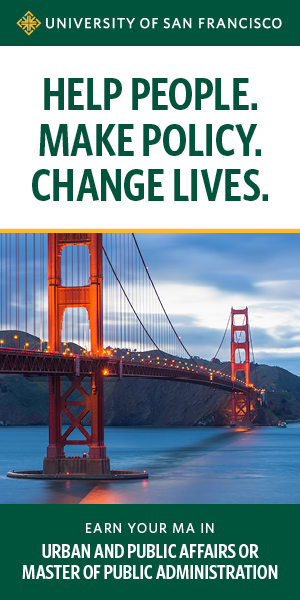George Monbiot is quite the journalistic character. He has worked, reported from, and almost died in some of the most dangerous parts of the world. He’s written 13 books. He’s also organized several environmental groups, been arrested numerous times—and writes a column for the UK Guardian that’s often among the most interesting things in that publication.

In a Jan. 26 column, he takes on the Yimby narrative of Britain’s Labour Party in a way that makes perfect sense, not just across the Pond but here in the US:
Build baby, build. That’s about the intellectual limit of the government’s housing strategy. Millions are under-housed, so let’s “bulldoze” the planning system and build more homes. But it’s not nearly so simple.
As soon as anyone challenges the policy, the government brands them a nimby – another of the crude truncations that pass for debate on this issue: nimbys versus yimbys. So before I go further, let me state that I want to see lots of new social and genuinely affordable housing built as part of a massive programme to solve the worst housing crisis of any wealthy country. I’ve been making similar calls for years, not least in the report I co-authored for the Labour party in 2019: Land for the Many. I oppose Labour’s current approach for a different reason. It will fail.
The plan to build 1.5m homes over five years now depends on just six volume housebuilders. No other mechanism is proposed at scale: Labour’s extension of the home building fund to incentivise small and medium housebuilders will deliver only 12,000 homes. But volume builders have an incentive to limit construction to the “market absorption rate”: in other words, they won’t dent their profits by building enough homes to reduce the selling price. They also minimise the release of affordable homes: they tend to promise them, then pare down their promises as development proceeds. Unaffordable homes are more profitable. The government has proposed no measures sufficient to change these incentives. … The financialisation of housing is a major driver of the fivefold increase in prices since the 1980s. You cannot simultaneously ensure that housing remains a lucrative investment and that everyone is well housed – yet this is what the government seeks to do.
The US has a lot more than six large corporations that build housing. But his larger point applies in any Capitalist economy: Builders won’t flood the market if that brings down prices. Profit is more important than housing. And housing has now become another Wall Street commodity, valued as an investment product—which means the current system will never lead to more affordability.
Interestingly, oil companies, which should be thrilled by Trump’s promise to “drill, baby, drill,” are saying they aren’t so sure it makes economic sense to go to the expense of opening new wells and new oil fields unless … oil prices go up. From The New York Times:
On the critical question of whether his policies will lead to more oil and gas production — one of Mr. Trump’s central goals — industry executives say not unless prices rise a lot, something the president says he will not stand for.
So more drilling won’t cause the cost of a tank of gas to come down, any more than increased market-rate housing will cause the price of an apartment to come down.
Imagine if we made policy based on the real world of modern, late-stage Capitalist economics.
Everyone agrees that San Francisco can’t function, much less revitalize downtown, without a functioning transportation system, which means Muni. And yet, Muni is a fiscal disaster, facing a massive budget deficit that right now means significant service cuts.

As of this summer, lines will be abolished, or wait times will get longer, or connections will be more difficult. Here, according to the SF Standard, are the main options:
Scenario 1: Reducing routes that have a parallel bus service nearby. Affected routes would include
21-Hayes
31-Balboa
55-Dogpatch
2-Sutter
6-Haight/Parnassus
Scenario 2: The routes mentioned above would be preserved, but “connector” routes like the 35, 36, 37, 39, 52, 55, 56, 57, 58, 66, and 67 would run less frequently — every 45 minutes, instead of every 30.
The following lines would see the number of stops scaled back or less frequent service:
5-Fulton
5R-Fulton Rapid
9-San Bruno
9R-San Bruno Rapid
14-Mission
14R-Mission Rapid
28-19th Avenue
28R-19th Avenue Rapid
38-Geary
Scenario 3: Some routes would be suspended.
These include:
2-Sutter
21-Hayes
55-Dogpatch
The problem is that the city doesn’t have a lot of options. Muni’s deficit this year is $50 million, and it will rise in coming years. Some of that is due to the lingering impact of COVID, when people didn’t ride the bus; Muni depends on fares for about 30 percent of its operating budget. Ridership is growing, getting closer to pre-pandemic levels, but a lot of riders don’t pay; farebox revenue was $197 million in 2019, and is predicted at $108 million for 2025.
Muni decided to speed up boarding by allowing riders to enter from back doors, and pay by tapping a Clipper card. There are fare inspectors who ride some lines, sometimes, who too often target young riders and people of color.
But fare evasion is a problem. So are fares: The price of a bus ticket just went up 25 cents, to $2.75 for an adult ride, and the more you raise fares, the more incentive people have to cheat, walk, drive, or ride a bike. At some point, fare increases are self-defeating.
So are service cuts: Fewer buses means fewer riders, and the less convenient Muni is, the more the likes of Uber and Lyft and Waymo are going to try to cannibalize public transit in the name of profit. It’s already happening.
The state’s not subsidizing Muni. The federal government did under Biden, but those days are over. So how can the city provide a public transportation system when there’s no money?
At the heart of this issue is the deeply flawed and unsustainable system that local governments have to use to finance public services in California. The passage of Prop. 13 in 1978 devastated property tax revenues, which had been a primary source of funding for everything from buses to schools (and enriched commercial developers and landlords in the process). The state backfilled some school funding, but did nothing to allow local government new revenue sources.
In fact, about the only way cities and counties can bring in new money is from business taxes, real-estate transfer taxes—and sales taxes. San Francisco has already raised transfer taxes on high-end sales to fund affordable housing (let’s hope Mayor Daniel Lurie spends that money the way it was intended.) The city has already rewritten its business tax rules.
And sales taxes are about the most regressive way possible to raise money.
San Francisco could do what Oakland is talking about, and raise sales taxes again. The current sales tax revenue is about $130 million a year; the city would have to double its local sales tax (now about 2.6 percent; the rest goes to the state) to begin to fund Muni’s deficit.
That’s not going to work.
So how do we keep Muni, and the city, from a serious crisis that everyone wants to avoid?
It’s time for the mayor, and our state legislators, to take seriously the fact that the only way we can fix cities in the Trump era, when the federal government is cutting taxes on the rich, is to let cities and counties enact more progressive taxes.
The state could do its own part, more easily than local government can. But I don’t see Gov. Gavin Newsom, who wants to be the next president, moving to raise taxes on the billionaires he would court to fund his campaign.
So that leaves local government.
New York has a city income tax (it’s about 3 percent). Philadelphia has a city income tax (3.8 percent) and people who commute to work in the city also pay (3.4 percent). In fact, lots of cities have a local income tax.
Income taxes, if set properly, are the most progressive form of taxation (other than wealth taxes, which nobody in the US has).
San Francisco could impose, say, a 1 percent to 3 percent levy on all income of more than, say, $300,000 a year; at the low end, people would pay $3,000 a year. People who make more than, say, $1 million would pay 3 percent, or $30,000 a year.
Rich people who itemize their deductions could take this off their state and federal taxes.
Instead of the blunt instrument of gross receipts or payroll taxes, the city could tax corporate profits, helping small businesses, which would see tax cuts.
That would solve the Muni problem—and in fact, the entire local budget deficit problem—without making anyone who earns less than $300,000 a year pay a penny in higher bus fares or sales taxes.
This is considered perfectly normal in many places. Not in California.
In this state, the Legislature has banned local income taxes.
A simple act of enabling Legislation in Sacramento could fix that.
State Sen. Scott Wiener is a huge fan of public transit, and has been talking about a major regional transit bond issue for 2026. Fine, but bonds can’t be used for operating expenses.
On the other hand, Weiner could introduce a bill to allow, not require, cities and counties to enact income taxes for transit. Or he could create a regional transit funding agency with the power to levy income taxes to pay for (and only for) bus and BART service; that would mean rich people in San Mateo and Marin would help pay for Muni service in Bayview. I prefer the local option, but a regional income tax (NOT a sales tax) might make sense, if it’s administered properly (NOT by MTC) and used just for buses and trains, not real-estate development.
I don’t see a lot of other options, except a fairly high regional sales tax. Scott?
The SFMTA will hold a hearing Tuesday/4 consider the options; the public is welcome to comment. That’s at 1pm, in Room 400 City Hall.




